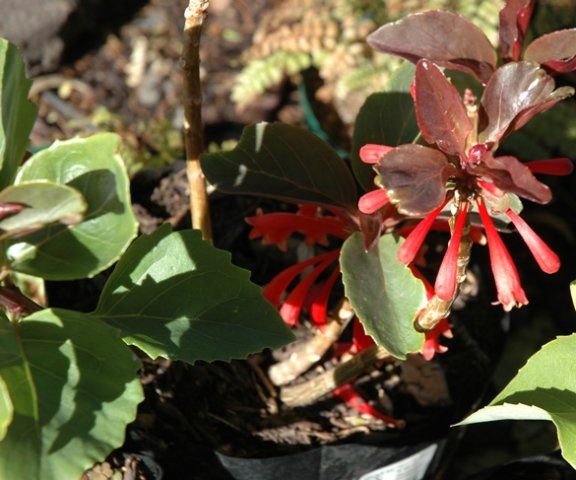Dermatobotrys saundersii

Author: Ivan Lätti
Photographer: Johan Wentzel
Dermatobotrys saundersii is an epiphytic plant, i.e. not requiring soil. It grows mainly in forks of a variety of trees to heights of 1 m, therefore mainly in shade. It also grows freely on forest floors. The roots become 1 m long, 5 cm thick. The rootlets are fibrous.
The thick stems are four-angled. The leaves are ovate in shape, semi-succulent with shallow marginal teeth. The leaves are from 5 cm to 15 cm long and 2,5 cm to 9 cm wide on petioles of about 5 cm long.
The red, tubular flowers grow in axillary clusters. The corolla tubes are narrowly funnel-shaped with tiny, angular, recurving lobes. The inside of the tube has stiff white hairs. Flowering happens from winter to early summer.
The ovoid fruit is a smooth berry, initially green becoming brown when ripe. The style persists at the fruit tip. The fruit is about 2,5 cm long and half that in width. The small seeds are borne in a fig-like pulp, good to eat.
The species distribution is in the Eastern Cape, KwaZulu-Natal, some East African countries and Madagascar. The species is not considered to be threatened in its habitat early in the twenty first century.
A piece of this plant can be placed securely in a garden in tree forks on a little humus or on the ground in shady, moist places. Little further caring may then be required (Pooley, 1998; http://redlist.sanbi.org).

